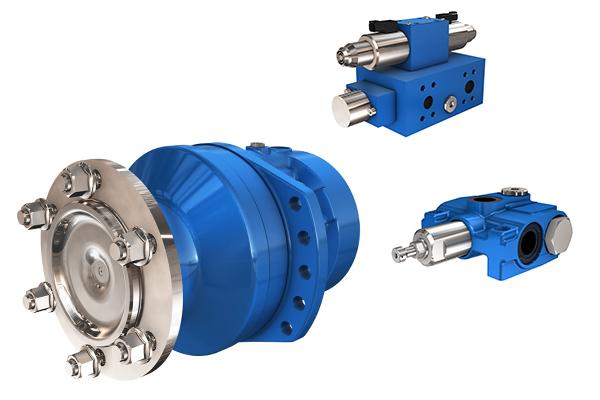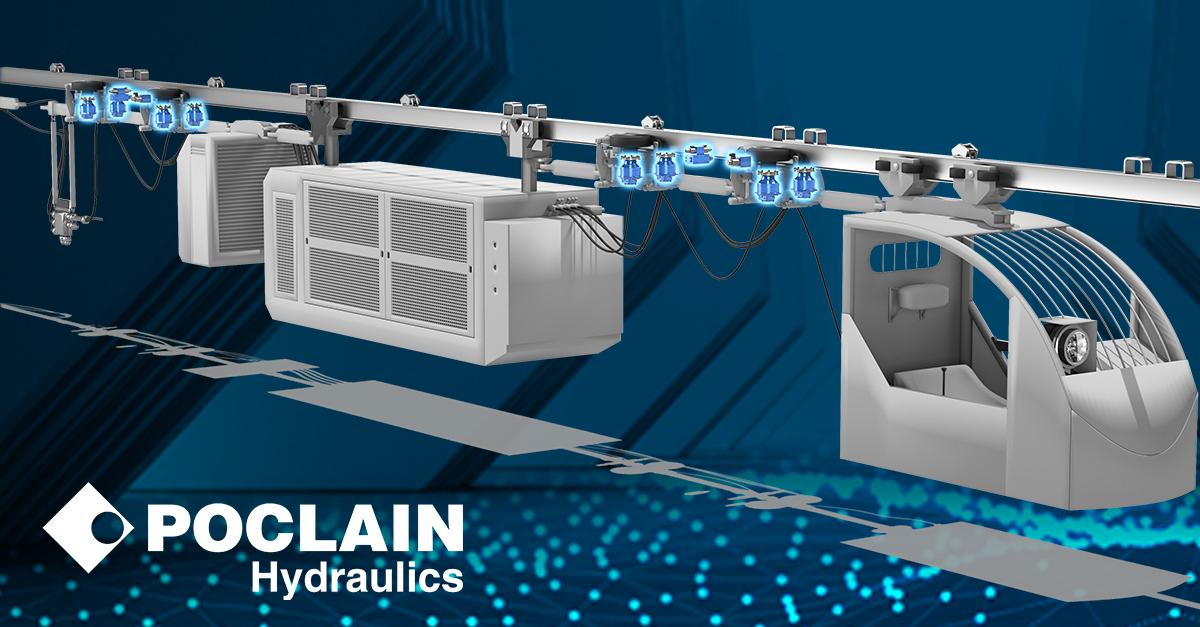POCLAIN HYDRAULICS SOLUTIONS FOR SUSPENDED LOCOMOTIVES
Because underground equipment involves personnel and equipment safety, suspended locomotive systems require a safe and reliable motor for propel applications with high power density, and driving force redundancy able to deal with all kinds of unexpected situations. Therefore in self-propelled machine applications domestic and global OEMs rely on cam-lobe low speed high torque propel solutions. Poclain Hydraulics world leading cam-lobe motor solutions have been applied by leading suspended locomotive OEMs and domestic, Chinese manufacturers such as Uroica and Xinyuan. Our motor provides the traveling force for the locomotive and propels the machine to move along the I-beam. The friction wheel is installed on our motor and presses on the I-beam (track). The pump supplies oil to the motor and drives the motor to rotate and crawl along the track.

According to the different torque requirements of the monorail crane, different numbers of motors are required. Generally, one group of two motors provides 20KkN traction, so a 200kN monorail crane needs 20 motors and a 160kN monorail crane needs 16 motors, which is equivalent to the force to lift 3-4 adult elephants.
Voice of the OEM and end-user
OEM R&D Engineer
The hydraulic drive system uses a French Poclain radial piston direct drive motor. It's advanced technology and high reliability is especially convenient for direction change. It also reduces production costs, improves labor productivity, safety and efficiency when compared to a high-speed motor and gearbox reduction system.
Mine Manager
The suspended locomotive boasts low operation noise, low failure rate, easy maintenance, low price and strong climbing ability. It can realize the overall transportation of large equipment such as hydraulic supports. The crawl drive uses a Poclain motor for more stable, quality locomotive with a lower failure rate. It can run safely in a lane with more curves, and can better match remote driving function and wireless remote driving function.

